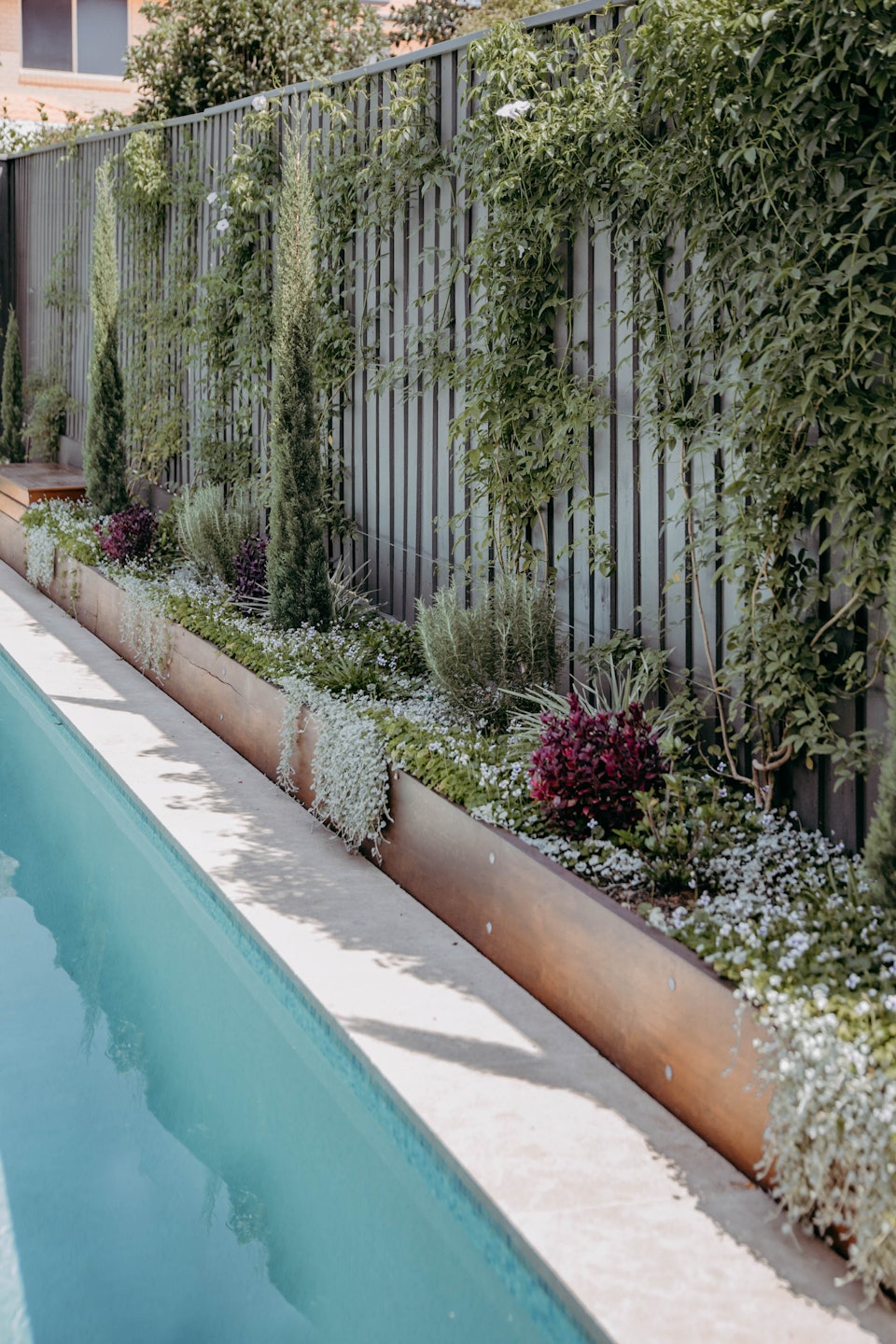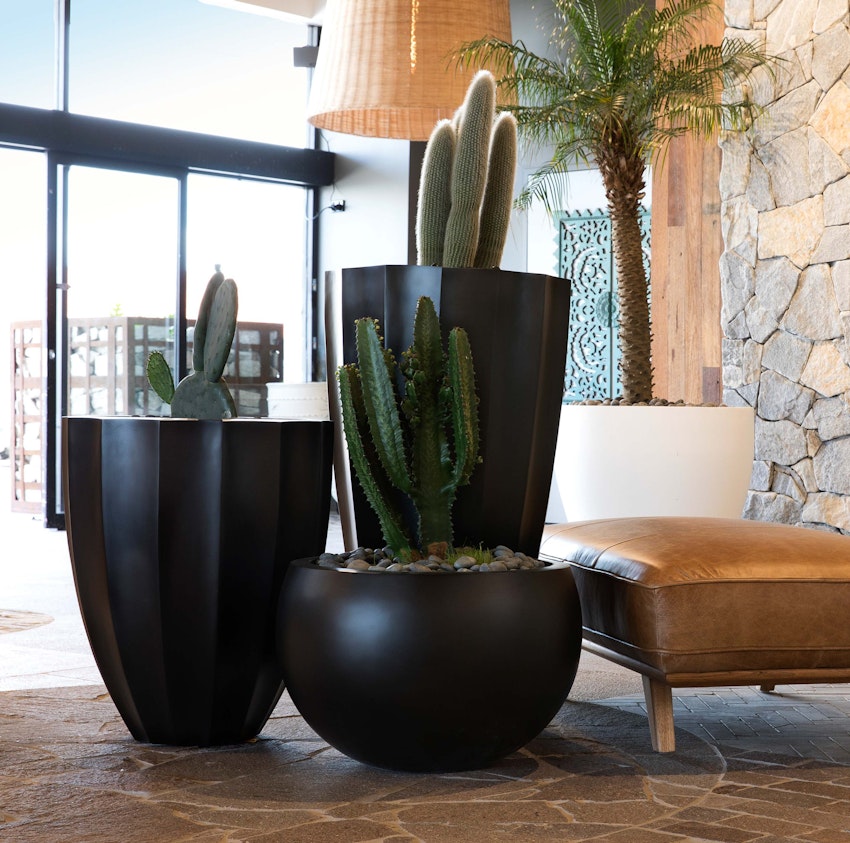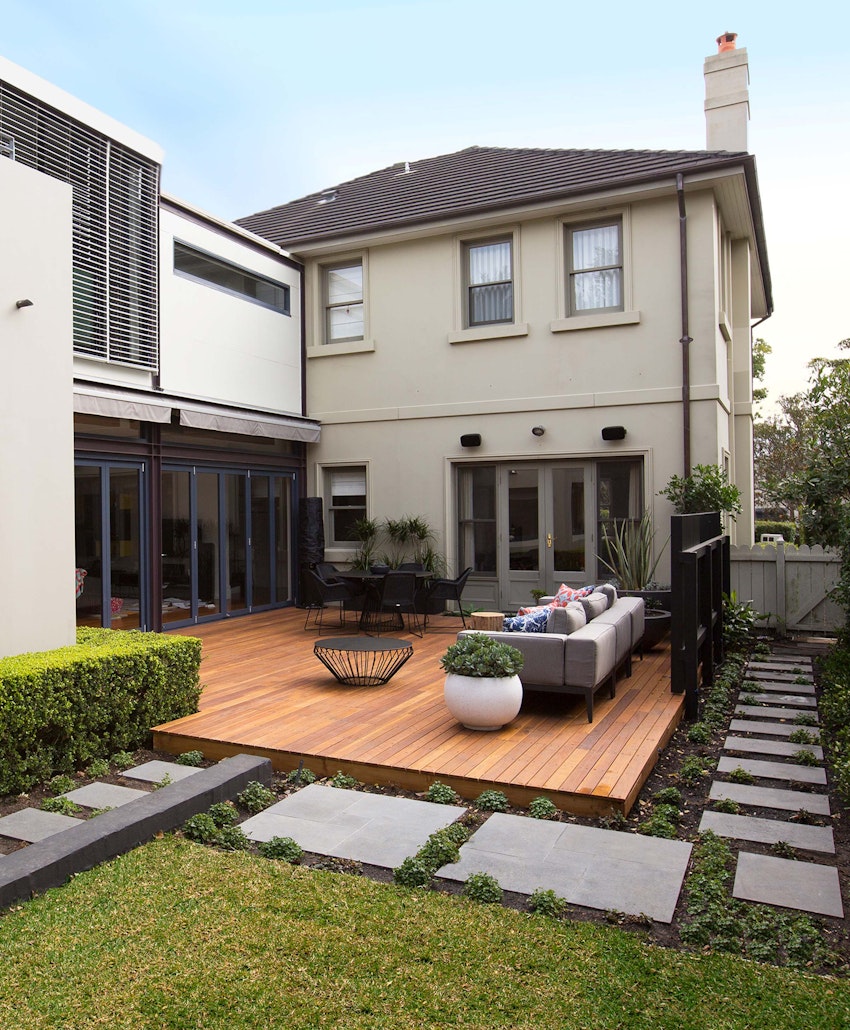If you have limited outdoor space but you love the idea of a lush green garden, a vertical garden or ‘living wall’ is the perfect low-maintenance, space-saving, water-smart solution.
A vertical garden is a method of growing plants on walls - a garden that grows up rather than across. Found both in nature and as part of ancient civilisations, vertical gardens have been thriving on walls all over the world for centuries.
As well as garden walls, vertical gardens can be grown on balconies, rooftops, in courtyards or just about anywhere. They make excellent privacy screens in high density living environments, and offer shade and a cooling-effect to unsheltered areas. Using water-saving technology, they’re ideal for Australia’s harsh climate.
Does a vertical garden sound perfect for your home? Then let’s learn how to grow one!
Where you can grow your vertical garden
The beauty of a vertical garden is that it can be grown just about anywhere. The location will help determine growth time and plant selection, but providing you get the right plants for the right environment, your vertical garden will thrive, whether it’s on a garden wall, an indoor wall, an exterior wall, a balcony, a free-standing screen, a pool fence or rooftop. As long as you’ve got a blank space that needs beautifying, you can tend to edibles, annuals and perennials.
The correct selection of plants plays a major role in achieving a vertical garden that thrives. A bit of homework into what’s right for your location will pay dividends.
The right plants
Nephrolepis exaltata
Also known as ‘Sword Fern’, nephrolepis exaltata is super easy to take care of and grows well in a humid environment. Lush and green, it keeps nearby temperatures moderate and controlled.
Epipremnum
Commonly referred to as ‘Pothos’, epipremnum is a great choice if light is limited in your space. Easily arranged to hang as it grows, it’s a wonderful decoration plant.
Eschynanthus radicans
Also known as the ‘lipstick plant’, aeschynanthus radicans works wonderfully in indoor areas and some outdoor areas. A beautiful looking plant with red flower buds and glossy green leaves, it stays healthy in dry conditions and poor light.
Acacia cognata
Acacia cognata gives a distinct look to your vertical wall, filling up the spaces in your wall to give it a fuller look. Ideally planted after your vertical garden has become somewhat established.
Dracaena
Dracaena offers wonderful contrast to your other decorative plants thanks to its hues of white, yellow, cream and red. Its long thin leaves hang well.
Hoya carnosa

Often called the ‘wax flower’, hoya carnosa can be easily coaxed into growing a certain direction and offer pretty wax-like white, pink and burgundy flowers.
Stephanotis floribunda
If you’ve ever attended a wedding ceremony under an outdoor gazebo, chances are you’re familiar with stephanotis floribunda. Known as the ‘wedding vine’, it’s a hugely popular choice in wedding decoration, and its large white flowers and delicate fragrance make it a great addition for your garden. This plant will do well in most conditions.
Spathiphyllum wallisii
Known as ‘peace lilies’, spathiphyllum wallisii don’t require much care, but offer spectacular white and green leaves. Easy maintenance even in low light and low humidity, this is a very appealing looking plant.
Epipremnum aureum
Sometimes referred to as ‘Devil’s Ivy’, there’s nothing devilish about epipremnum aureum. A popular houseplant, it’s an evergreen vine that will adhere to almost any surface, offering alternate heart-shaped leaves that hang beautifully as part of a vertical garden. It is, however, listed as toxic to cats and dogs because of the presence of insoluble raphides.
Codiaeum veriegatum pictum

Also known as ‘Croton’ this shrub’s leathery leaves bring wonderful colour to your vertical wall and will thrive in bright light and high humidity.
Succulents
Succulents are one of the most popular plants used on vertical walls these days, due to their incredible adaptability and resistance to fluctuation in temperature and climatic variations.
Bromeliaceae
Known as ‘bromeliads’, bromeliaceae is easy to grow, inexpensive to purchase, and rewards your vertical wall with brilliant long-lasting blooms and ornamental foliage. They come in a wide range of sizes, making them suitable for almost any space, and can be grown in both cool and warm areas.
Begonias
Begonias come in all sorts of colours, so are ideal for bringing splashes of colour to your vertical wall. Favourites include ‘Irene Nuss’, with lustrous bronze leaves and salmon flowers.
Growing vegetables and herbs
Not every vertical garden has to feature ornamental and ‘showy’ plants. Vertical gardens can also be practical with veggies and herbs. Given the chance, most people would admit to wanting to grow their own crisp vegetables and tasty herbs from home. It’s not so easy, however, when you have limited space. Luckily, veggies and herbs can thrive in vertical gardens just as well as the plants listed above.
To grow veggies and herbs in a vertical garden, you will need an area that sees at least six hours of direct sunlight a day. You’ll also need quality soil, so consider amending your soil with compost before you start planting. You should also have a good idea of what plant hardiness zone you live in, which will guide you towards the most suitable crops to grow. Lastly - consider what veggies and herbs you and your family like to eat.
Making sure you have the right soil
Vertical gardens can dry out quickly, so use a good potting soil that will help retain water and hold in moisture. You might also like to add in a starter dose of organic plant food at label rate. Things to look for in your soil include:
- A light and fluffy structure for high water and air permeability to combat the forces of compaction
- High organic content from humid plant matter for good moisture and nutrient retention
- Low in heavy clays to provide adequate water movement.
Choose high-quality pots or troughs in your vertical garden, as these are durable and add a touch of rustic charm to your vertical garden.
Getting the right placement
In general, you want to try and mix plants with the same ‘habit’ and rate of growth. If you put a slow-growth plant next to a fast-growing plant, it doesn’t take a genius to know what’s going to happen.
As gravity pulls the water down, plants that don’t need much water are recommended for the top part of the garden, as this is the area that will dry out the quickest. Place the plants more suited for wetter conditions at the bottom of the system.
Establishing your garden
Ideally, you want to grow your vertical garden horizontally for a few weeks to let your plants, herbs and vegetables get established in their environment. If you are using a wooden pallet or a container with panels, lay them flat at first and plant vertically. This way, your plants still-delicate roots won’t have to compete with gravity pulling down your soil. Once plants are established, hang on the wall or your desired structure.
Sorting out your irrigation
Living walls are more compact, and therefore have less soil. This will mean they need watering more often. Unless you plan on watering it yourself several times a day in summer (which can be tricky), a drip irrigation system is your best bet for a thriving garden. You can choose a sophisticated system with hoses and timers, or opt for a more basic system with holes in the bottom of planters or pockets which allow for water to drip down.
Choosing any extras
The reality is that you may have some plants die off, and if you’re left with an empty space, your wall will start to look ugly. A good idea is to grow a few spares in pots nearby so that you can quickly plug new ones in when required.
Buying your vertical garden kit
A quick visit to Bunnings can see you pick up a basic vertical wall garden kit, or you may choose to purchase something more elaborate and sophisticated. Or, you can try building your own vertical garden from scratch.
Enjoying a beautiful vertical garden year-round
Regardless of where you live, regardless of the space you want to turn ‘green’, you won’t be disappointed by the advantages that a vertical garden offers. Vertical gardens maximise space, create ambience, give a sense of height and depth, offer privacy, increase accessibility, enhance visual appeal, and reduce the impact of an urban environment.






